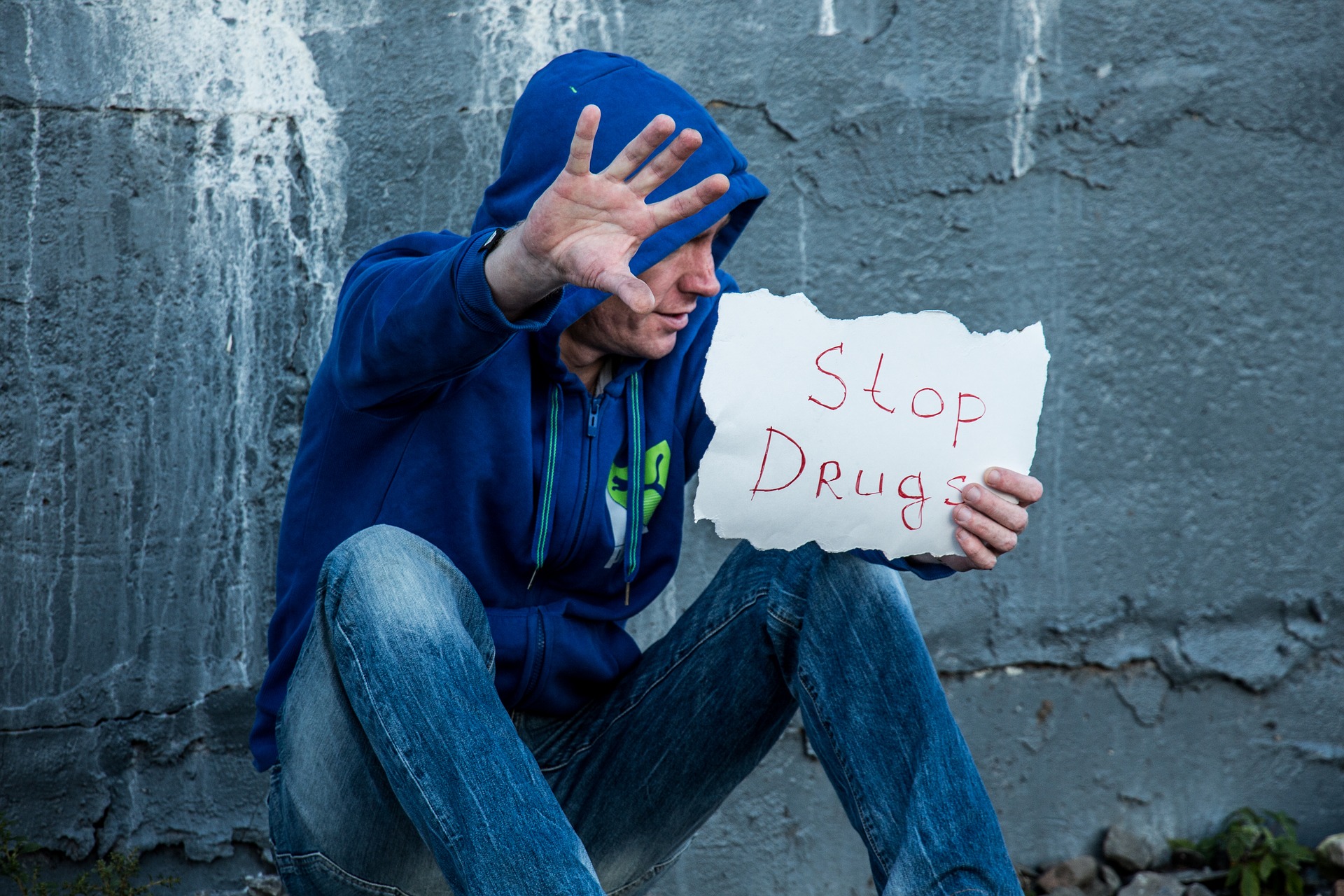There is a growing epidemic in the United States, the current drug crisis kills more people on a yearly basis than guns or car accidents. In 2016, more than 64,000 people lost their lives in the U.S. due to a drug overdose. The CDC (Centers for Disease Control) reported the highest increase was among synthetic opioids.
The number of people being cared for and admitted into treatment continues to climb but the rate of relapse is 40 to 60 percent by some estimates. This high relapse rate could be related to the potency of synthetic opioids as the drugs being used today are much more powerful and harmful than ever before.
Increased Overdoses Linked to Adulteration of Drug
Supply
Heroin use usually starts off as an addiction to prescription opioids. But prescription medication is either too expensive or more difficult to get so, many people turn to heroin as a cheaper alternative. Unfortunately, much of the heroin making its way to the U.S. is adulterated with synthetic opioids. The danger with synthetic opioids is that they are many times more powerful than heroin.
For instance, fentanyl is 50 to 100 times more potent than morphine and 25 to 50 time more powerful than heroin, while the synthetic fentanyl analogue carfentanil is up to 10,000 more times powerful than morphine. This leads to an increased risk of overdose rates as someone with a substance use disorder has no way of knowing if they are using heroin or something adulterated with synthetic opioids.
The Argument for Medication Assisted Treatment
When someone is looking for help for drug or alcohol addiction it’s important to note that the abstinence only model doesn’t work for everyone. A partial hospitalization program (PHP) typically lasts for about 30 days. Beth Hayes, Discharge Coordinator for Transformations Treatment Center says, “30 days in treatment isn’t long enough to guarantee sobriety.”
According to research conducted by Dr. Stephan Batki, Professor of Psychiatry at the University of California, San Francisco, he found that up to two-thirds of people with an opioid use disorder relapsed after leaving an abstinence only treatment program. This has led to a debate over the benefits of medication assisted treatment (MAT) vs. abstinence only treatment plans.

What is Medication Assisted Therapy?
MAT, or medication assisted therapy, is a form of pharmacotherapy. It is a pharmacological intervention that can be used along with a comprehensive addiction treatment plan. The drugs used for MAT help normalize brain chemistry, relieve physiological cravings, stabilize body functions and block the euphoric effects of opioids.
Medication Assisted Therapy:
- Reduces craving for opioids
- Helps avoid severe withdrawal symptoms
- Lowers rate of relapse
- Helps maintain long-term recovery
- Gives people the opportunity to live a drug-free life
- Lowers the number of overdose deaths
Medication assisted treatment is also being recommended more often in drug court programs. However, the availability of MAT services is limited in some drug courts, especially in rural areas.
Drug Courts Recommending MAT for Opioid Addiction
Drug courts are used in certain areas of the U.S. as an alternative to conviction to help high risk, high need individuals. Someone enrolled in a drug court typically stays in the program between 12 and 18 months. According to the National Drug Court Institute, 20% of urban drug courts and over 30% of rural drug courts listed opioids as the number one substance of abuse.
Drug court plans include specific conditions that must be met by the defendant. If these conditions aren’t followed this can result in removal from the drug court program and time spent in jail. These conditions can include:
- Mandatory drug testing
- 12-step meetings
- Living in a halfway house
- Addiction treatment recovery plan
- Anger management classes
- Mental health assessment
- Community service
- Medication assisted treatment
In 2015, the Bureau of Justice Assistance made it mandatory that any drug courts receiving federal funding could not deny a candidate access into a MAT program. Drugs courts rely on treatment centers to determine if MAT can be offered to their participants however, not all facilities have qualified medical practitioners on staff.
In an article published on the Institute for Research, Education & Training in Addictions website author Miranda Gottlieb mentions, “In 2016, Congress passed the Comprehensive Addiction and Recovery Act (CARA), which expanded buprenorphine prescribing privileges to include nurse practitioners and physician’s assistants. Also in 2016, the Department of Health and Human Services lifted the buprenorphine patient cap for physicians from 100 to 275.” These efforts should help improve access to MAT services.
The Case for Offering MAT at Other Treatment Centers
Offering MAT at a treatment center is not a step away from an abstinence based treatment program, rather, it’s a way to offer more services and options to clients and ultimately, save more lives. Because of the reluctance to offer medication assisted treatment at some facilities, it’s important that the clinical directors take the time to educate their staff.
In the article Does Relapse Mean Treatment Failure, Terence T. Gorski mentions, “The belief that relapse means that treatment failed ignores the fact that, for many patients, recovery involves a series of relapse episodes. Each relapse, if properly dealt with in treatment, can become a learning experience which makes the patient less likely to relapse in the future.”
There is a right way and a wrong way to use MAT. It’s not as simple as filling out a prescription form and never seeing the client again. MAT clients must attend group or personal therapy sessions, follow a gradual tapering plan and undergo constant monitoring by clinical staff.
No two people are the same so, the recommendation for or against MAT should only be made after a thorough assessment based on the client’s particular addiction treatment needs. For the best possible outcome, MAT should be used along with:
- Behavioral counseling
- Life skills training
- Housing help
- Vocational training
- Medication monitoring
- Laboratory studies
- Patient education
- Physical examination
Medication Assisted Treatment Protocols
The number one protocol that should be in place when considering MAT, is to only make it available for people who have used opiates for at least one year. Clients who have used opiates for less than one year would be offered a traditional abstinence-based treatment plan.
Anyone trying to recover from active addiction must learn how to better manage their emotions, control their triggers, and otherwise learn a whole new way of living. When used along with counseling and behavioral therapies, medication assisted treatment can be a highly effective treatment model for opioid use disorders.
Research
National Institute on Drug Abuse. Overdose Death Rates, Revised September 2017. https://www.drugabuse.gov/related-topics/trends-statistics/overdose-death-rates
National Institute on Drug Abuse. Research on the Use and Misuse on Fentanyl and Other Synthetic Opioids. https://www.drugabuse.gov/about-nida/legislative-activities/testimony-to-congress/2017/research-use-misuse-fentanyl-other-synthetic-opioids
The International Journal of Drug Policy. August 2017, Volume 46, Pages 107-111. Fentanyl in the US Heroin Supply: A Rapidly Changing Risk Environment. http://www.ijdp.org/article/S0955-3959(17)30181-0/fulltext
Psychiatric News. Opioid-Addiction Treatment: Maintenance or Abstinence Better? https://psychnews.psychiatryonline.org/doi/10.1176/pn.45.14.psychnews_45_14_024
Gorski, Terence T. (2017, December). Does Relapse Mean Treatment Failure? The Sober World, Volume 6, Issue 12, p. 23.
Transformations Treatment Center. Illicit Drug Use in Illinois: Drug Courts as an Alternative to Conviction. https://www.transformationstreatment.center/drug-rehab-centers/drug-rehabilitation/drug-court-alternative-treatment-program/
Legal Action Center. Medication-Assisted Treatment in Drug Courts: Recommended Strategies. https://lac.org/wp-content/uploads/2016/04/MATinDrugCourts.pdf
National Drug Court Institute. Drug Court Practitioner Fact Sheet. Medication-Assisted Treatment for Opioid Use Disorders in Drug Courts. https://www.ndci.org/wp-content/uploads/2009/04/mat_fact_sheet-1.pdf
Institute for Research, Education & Training in Addictions. 3 Barriers to Medication-Assisted Treatment for Drug Court Participants and How They Can be Overcome. http://ireta.org/2017/05/09/3-barriers-to-medication-assisted-treatment-for-drug-court-participants-and-how-they-can-be-overcome/
Florida Alcohol & Drug Abuse Association. Medication-Assisted Treatment for Substance Use Disorders. https://www.fadaa.org/vivitrol/documents/VivitrolGuidelines.pdf
Substance Abuse and Mental Health Services Administration. Medication-Assisted Treatment for Opioid Addiction in Opioid Treatment Programs. https://www.ncbi.nlm.nih.gov/books/NBK64149/


